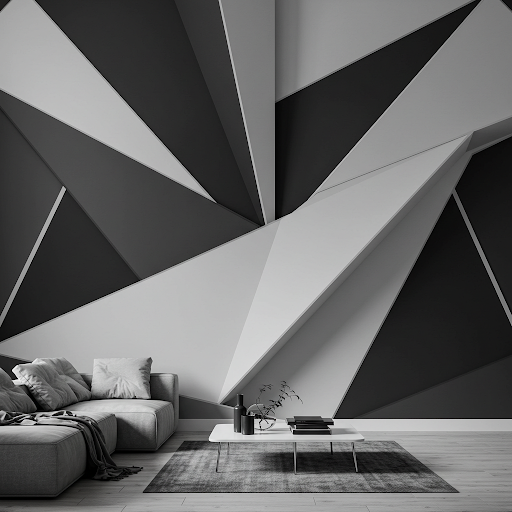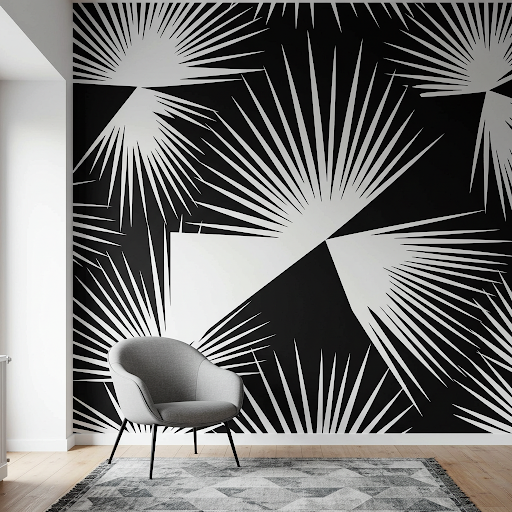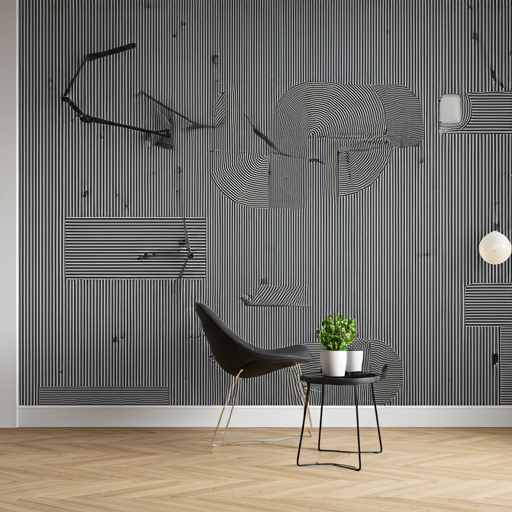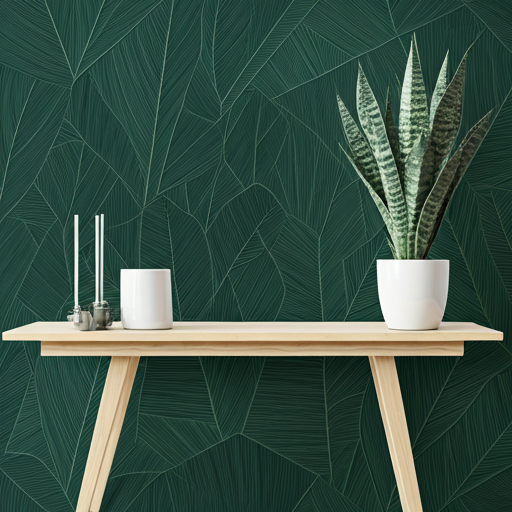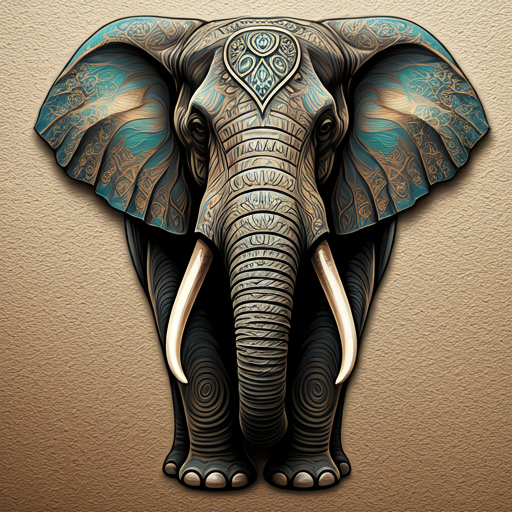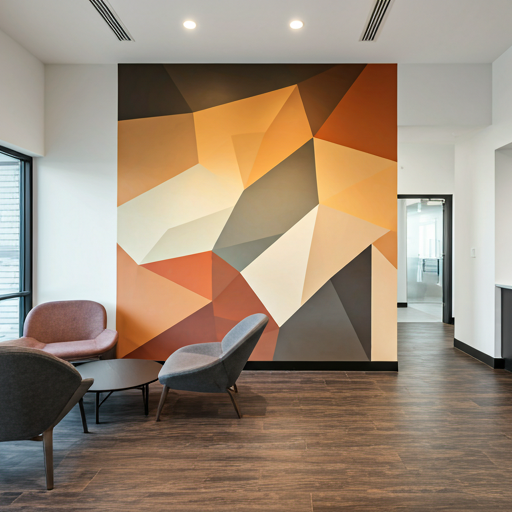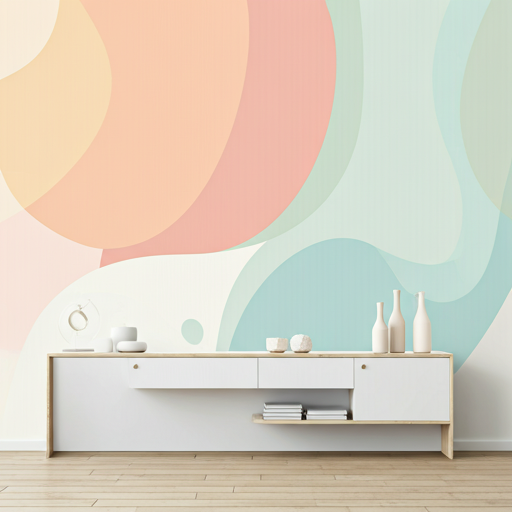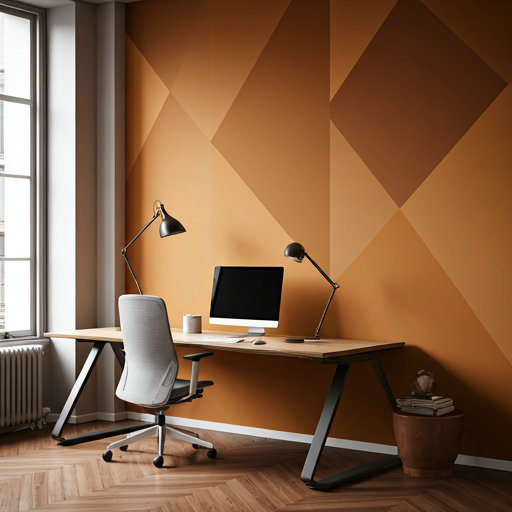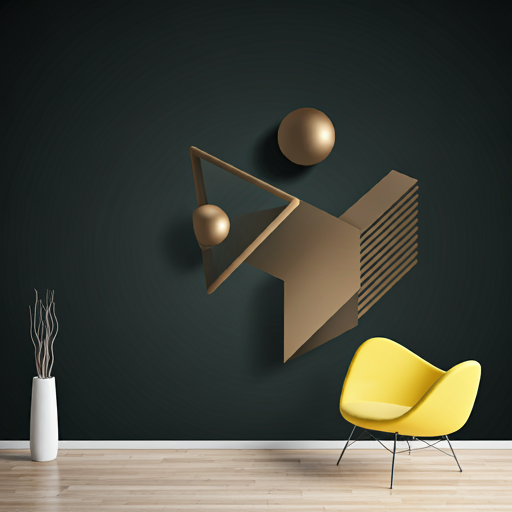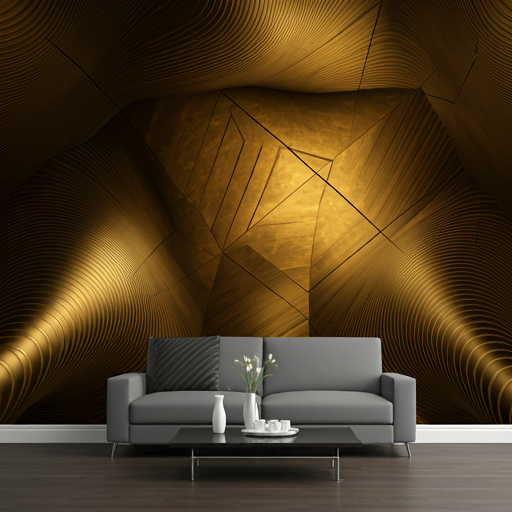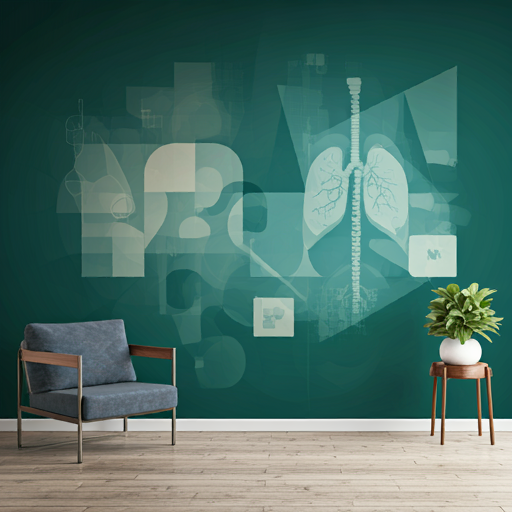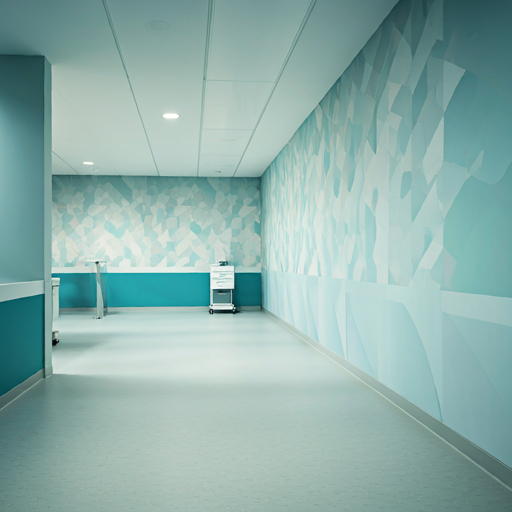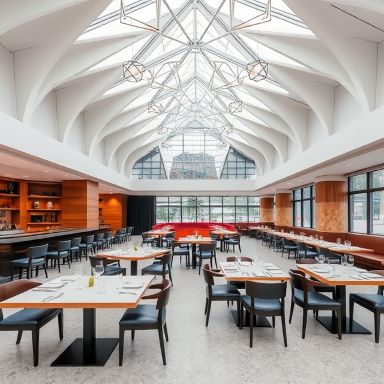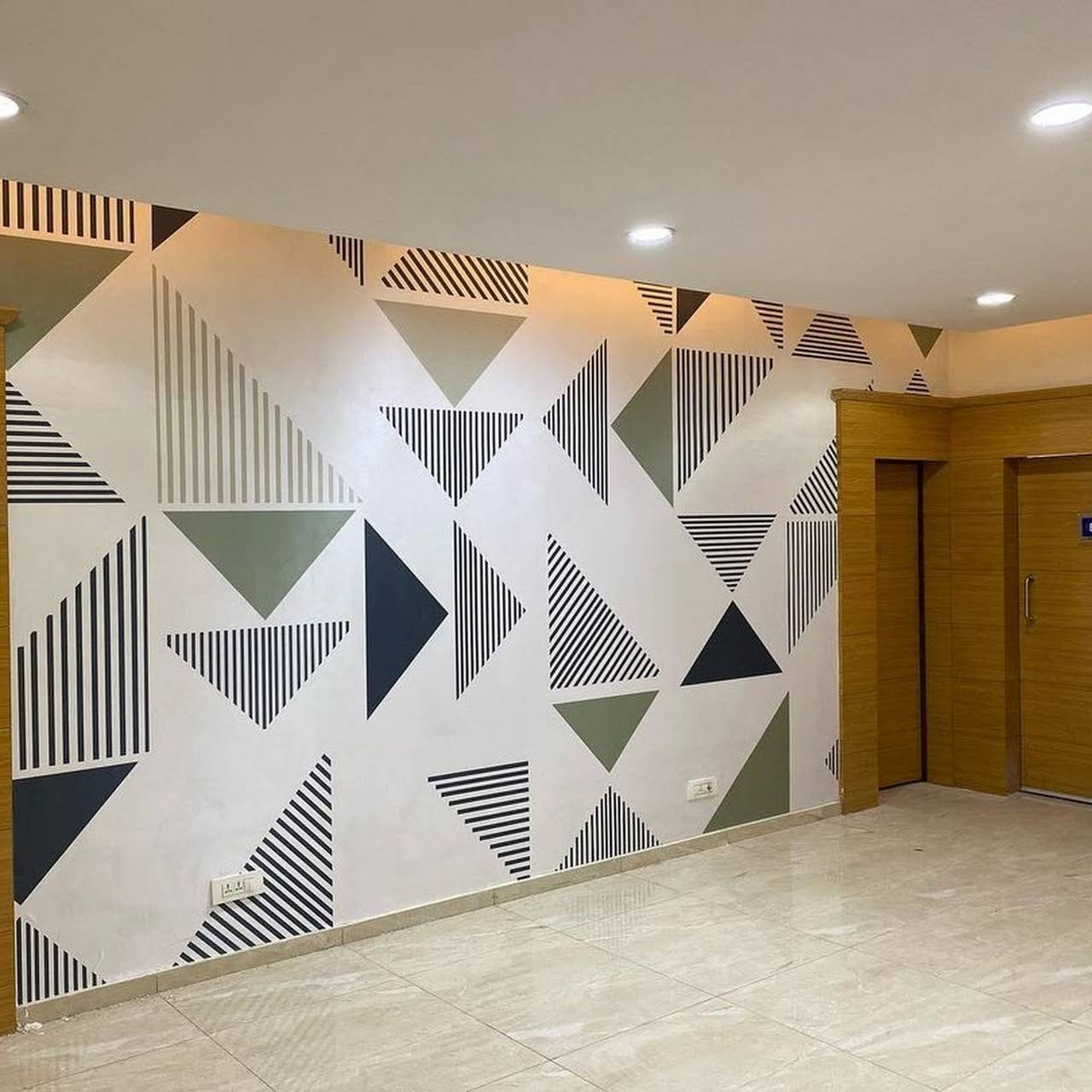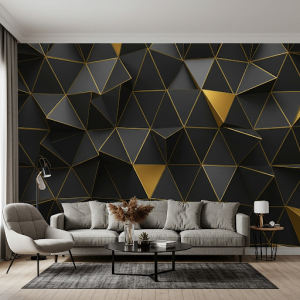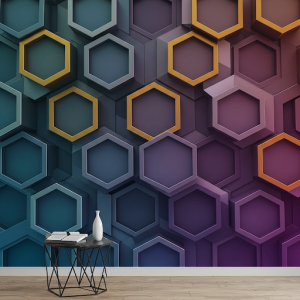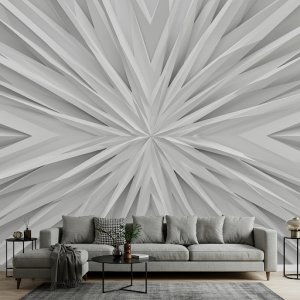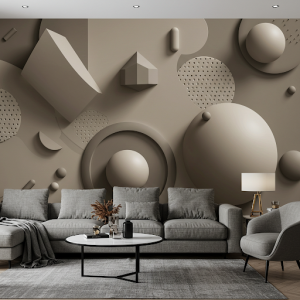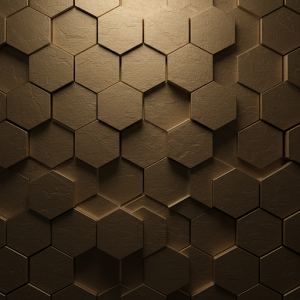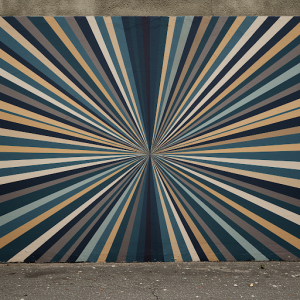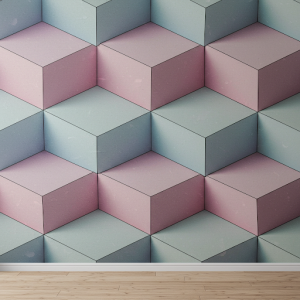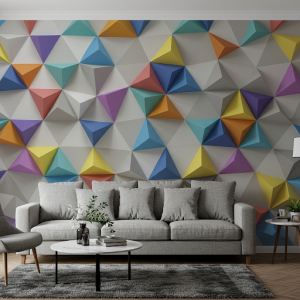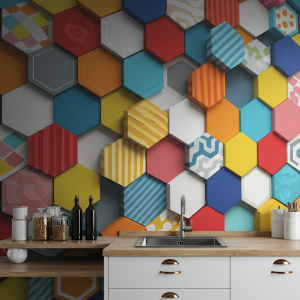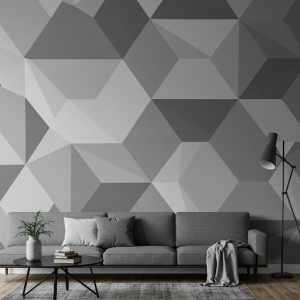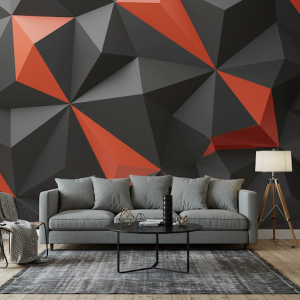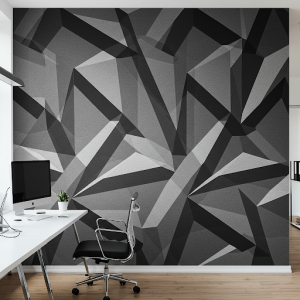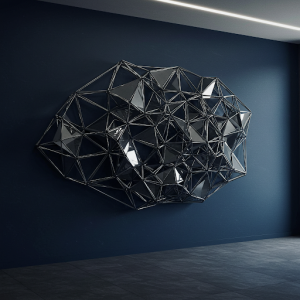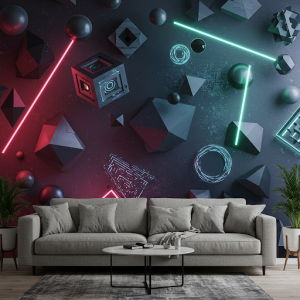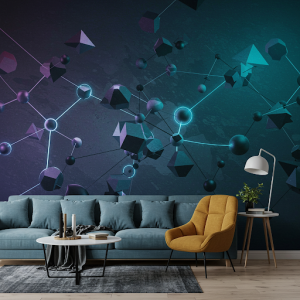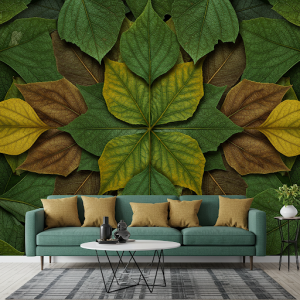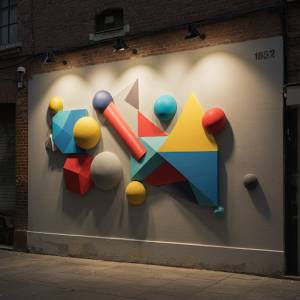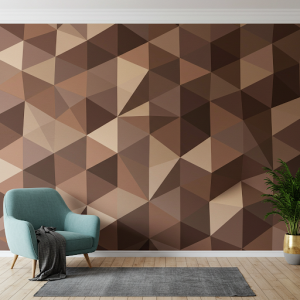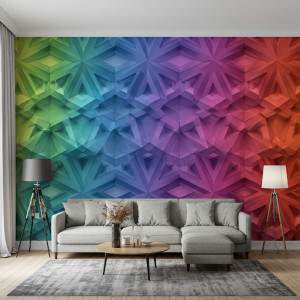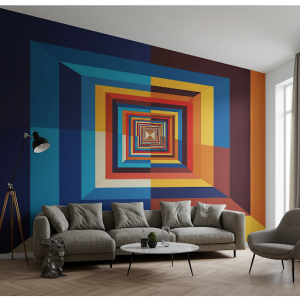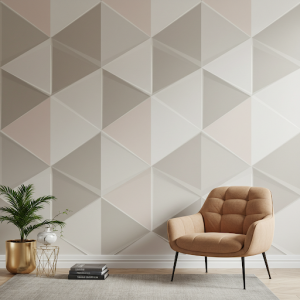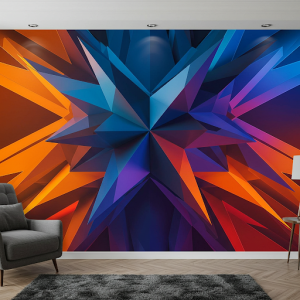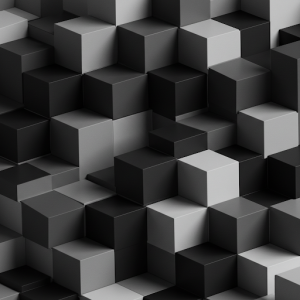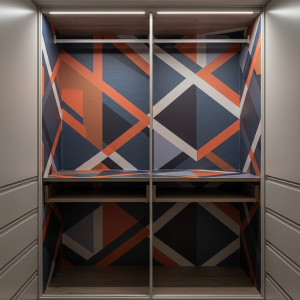Description
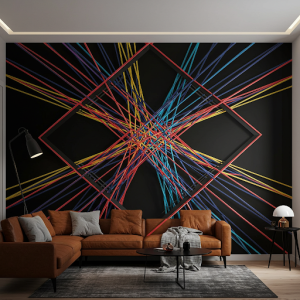
3D lines and geometric wallpaper truly revolutionize wall decor, using the power of optical illusions to transform spaces. By cleverly manipulating lines and grids, these wallpapers create the perception of depth and dimension, making walls seem to recede or expand. This effect is achieved through a variety of techniques, such as:
Forced Perspective
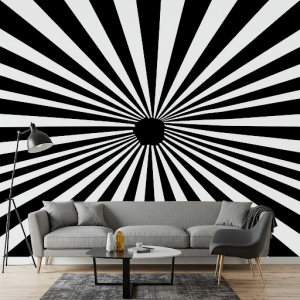
Forced perspective in 3D geometric wallpaper isn’t about literal depth, but the illusion of it. Lines and shapes are meticulously arranged to trick the eye into perceiving a three-dimensional space where only a flat surface exists. This is achieved by manipulating the apparent size and placement of geometric forms. Shapes intended to appear “closer” are often larger and positioned lower on the wall, mimicking how we perceive nearby objects in real life. Conversely, shapes designed to recede are smaller and placed higher, creating the illusion of distance.
Converging lines, a key element of forced perspective, play a crucial role.
These lines, though printed on a flat surface, appear to converge at a vanishing point, mimicking the way parallel lines seem to meet in the distance. This technique creates a sense of depth and scale, making the wall seem to extend beyond its physical boundaries. The interplay of these strategically sized and positioned shapes, combined with converging lines, creates a compelling illusion of depth, making objects appear closer or farther away than they are, adding a dynamic and captivating element to the wall.
Shadow and Light
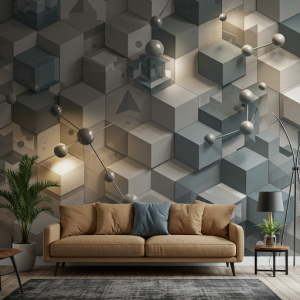
The interplay of light and shadow is fundamental to the captivating illusion of depth and texture in 3D geometric wallpaper. It’s not simply about printing a flat image; it’s about mimicking how light interacts with three-dimensional objects in the real world. Subtle gradations in shading, carefully placed to suggest the fall of light across a surface, create the impression of volume. Darker areas represent recessed surfaces, hinting at concavity, while lighter areas highlight protrusions, suggesting convexity. This interplay of light and dark isn’t just random; it’s strategically designed to trick the eye into perceiving depth where there is only a flat surface.
The effect is more than just visual; it’s almost tactile. The way light and shadow interact can create the illusion of texture, making the patterns appear to have a physical presence. A cleverly shaded cube might seem to cast a shadow, further enhancing its apparent three-dimensionality. This manipulation of light and shadow is what makes the patterns appear to pop out or recede, creating a dynamic and engaging visual experience. It’s this delicate balance of light and dark that elevates 3D geometric wallpaper from a simple wall covering to a captivating piece of visual art.
Color Contrast
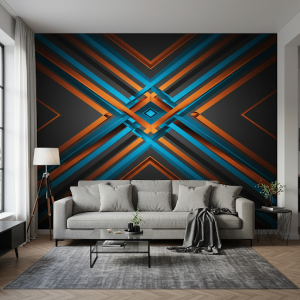 The contrasting colors can enhance the 3D effect, making certain elements appear closer or farther away.
The contrasting colors can enhance the 3D effect, making certain elements appear closer or farther away.
The result is a captivating and dynamic visual experience that can completely transform the look and feel of a room. Whether you choose a bold, geometric pattern or a more subtle design, 3D lines and geometric wallpaper make a statement.

